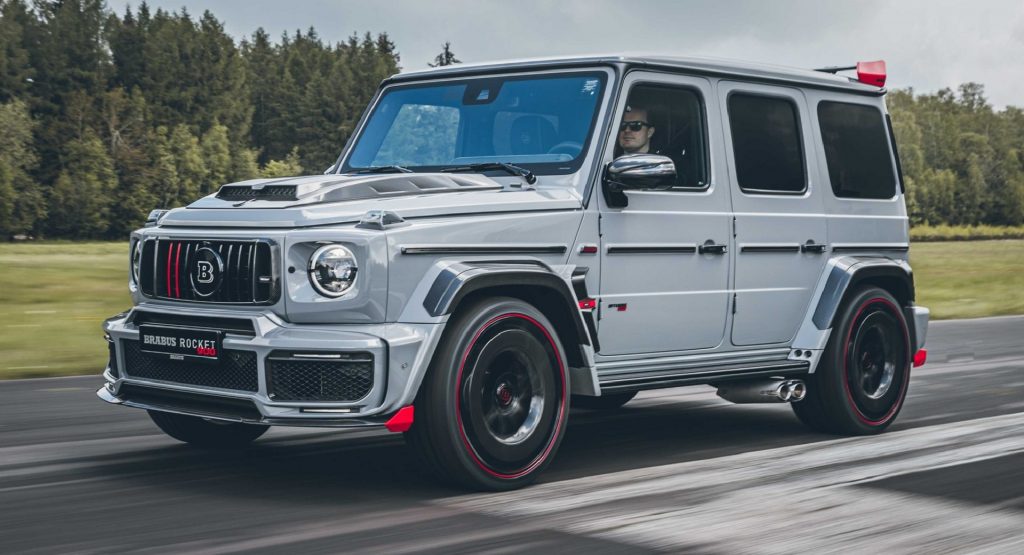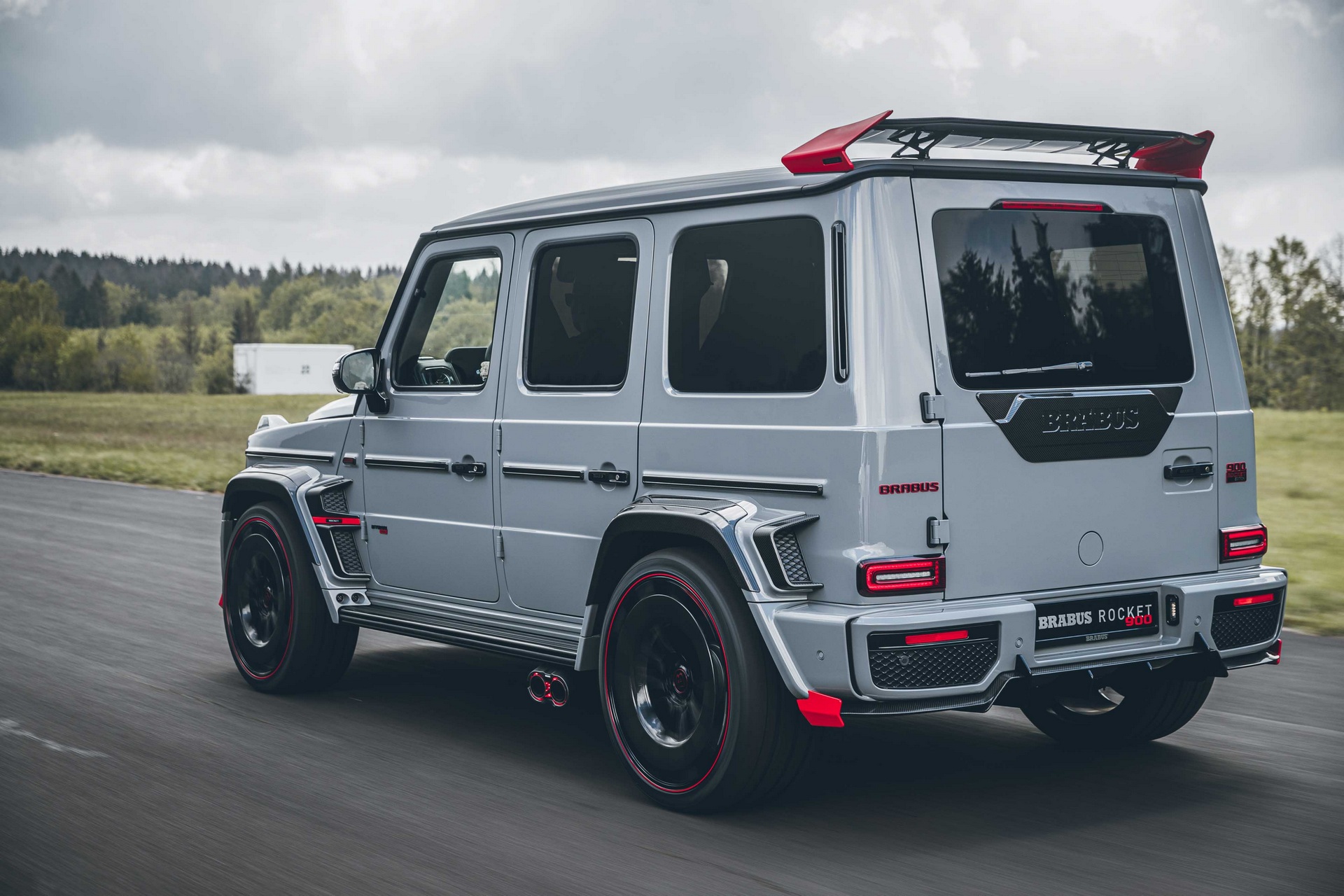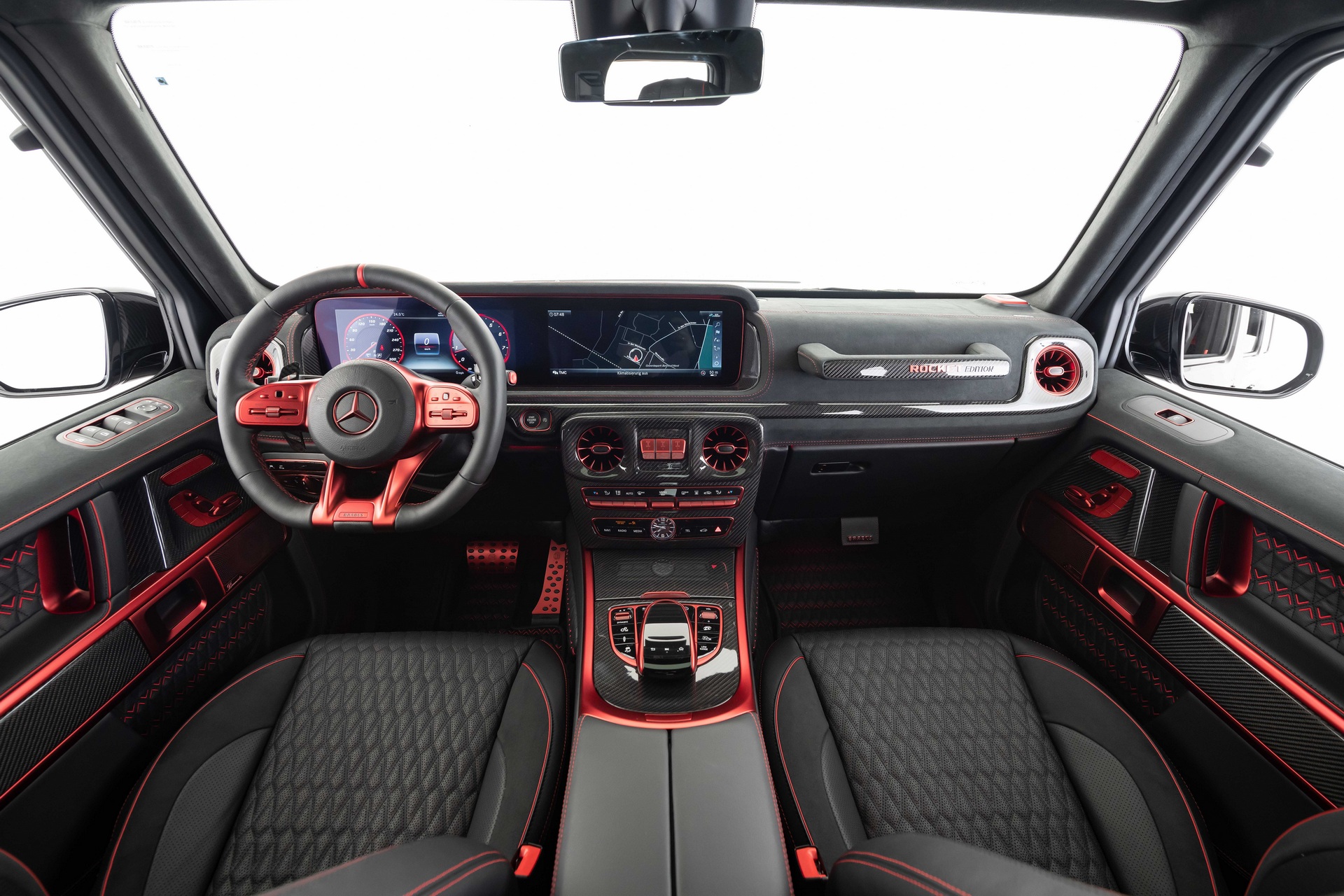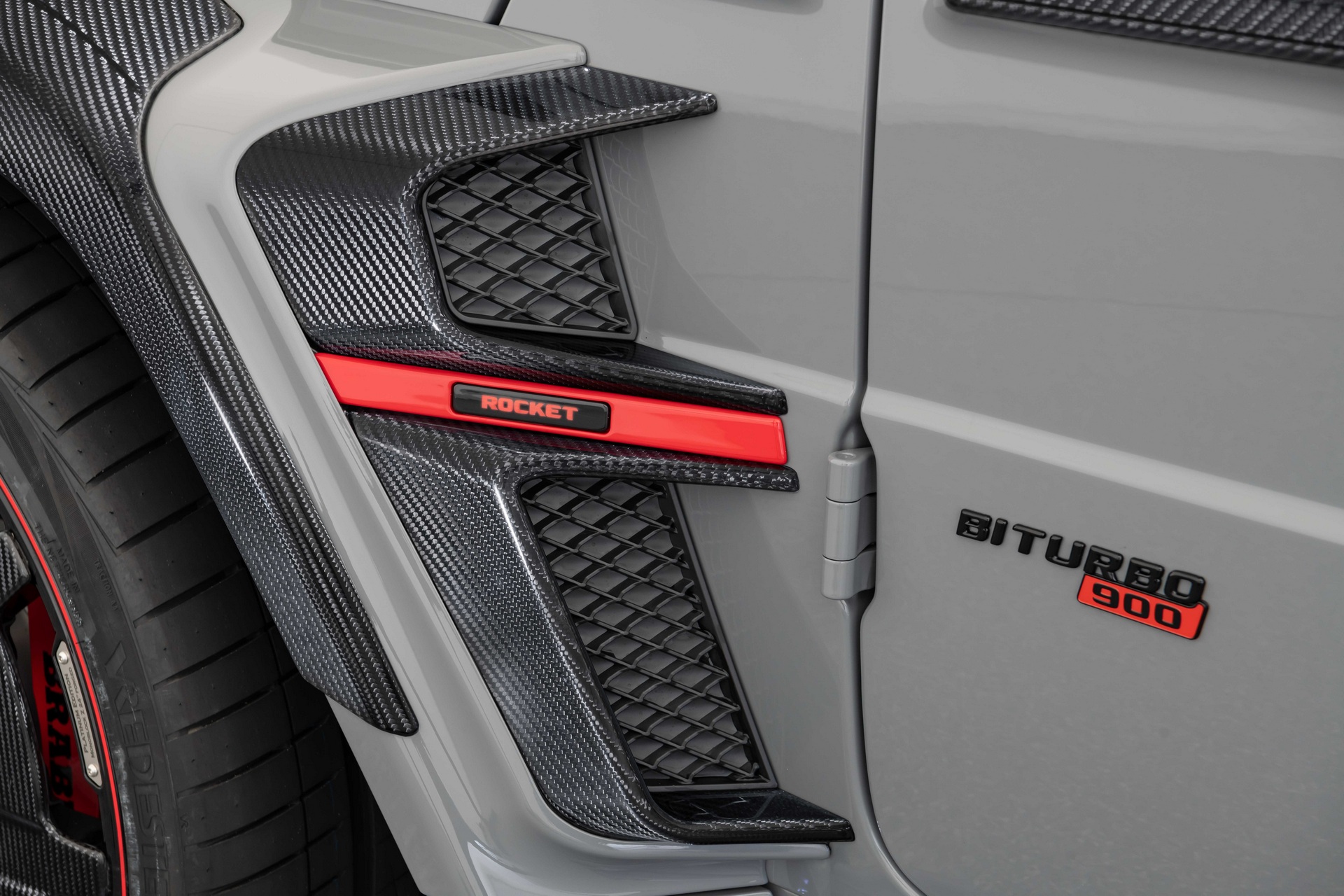Brabus is no stranger to the second-gen Mercedes-AMG G-Class, making it faster and more powerful since it first came out in 2018. This year though, the German tuner has reached its peak with the new limited-edition Brabus 900 Rocket.
Starting with the exterior modifications, the 900 Rocket is fitted with the latest version of the Brabus Widestar bodykit. It gets similar front and rear bumpers, wide fender add-ons, double bonnet scoop, and extra intakes with the previous 700 Widestar (2018) and 800 Widestar (2019), however this time it looks even more aggressive thanks to more extensive use of exposed carbon-fiber and a few extra parts.
Read: New Mercedes-AMG G63 Breaks Cover With 577HP, 0-60 In 4.4 Seconds
These include a new front spoiler, carbon-fiber grille with Rocket Startup Glow, different exhaust pipes coming out from the sides, and a new roof spoiler for extra downforce. The presentation car is painted in Stealth Gray with red-painted details all around the bodykit, but Brabus is willing to finish the SUV in any color.
The exclusively designed forged 24-inch Brabus Monoblock Z “Platinum Edition” rims with carbon fiber Aero Discs are shod in mixed performance tires (295/30 at the front and 355/25 at the back).
Power, tons of more power
Brabus engineers have increased the displacement of Mercedes-AMG’s twin-turbo V8 from the stock 4.0 liters to 4.5 liters. They also added larger turbochargers, billet crankshaft, enlarged cylinder bore (84 mm), longer stroke (100 mm), new forged pistons, forged connecting rods, BoostXtra valves, high-pressure pumps, Ram-Air intake system, stainless-steel exhaust system with a free-flow metal catalyst, and larger downpipes with active exhaust flap. Finally, they tweaked the ECU software with new mapping for injection, ignition, and boost pressure control.
Thanks to the aforementioned modifications, the engine now delivers a healthy 888 hp (900 PS / 662 kW) at 6,200 rpm which is 309 hp (315 PS / 231 kW) more powerful than the stock G 63. As for the torque, the engine could produce up to 922 lb-ft (1,250 Nm) from 2,900 rpm, but this crazy figure was electronically limited to 774 lb-ft (1,050 Nm).
Despite weighing 2,560 kg and having the aerodynamics of a brick, the added power allows the G-Wagen to accelerate from 0-62 mph (0-100 km/h) in just 3.7 seconds defying the laws of physics. This is 0.8 seconds faster than the stock G 63 and 0.1 seconds quicker than the ultimate Brabus G V12 900! Flat out, it will reach 280 km/h (174 mph) before the speed limiter kicks in to protect the tires.
Power is transmitted to all four wheels through the 9G-TRONIC automatic gearbox. As with all the G-Wagens, the permanent all-wheel-drive system has electronically controlled locking differentials – even though this one won’t be spending much of its time off the beaten track.
See Also: Mercedes-Benz G63 AMG 6×6 By Brabus Has 700 HP, $1 Million Price Tag
The ride is complemented by the Brabus RideControl aluminum coilover suspension with electronically controlled dampers, lowered by up to 45 millimeters (1.77 inches). In order to stop this beast, you need 400 mm (15.7 in) vented and cross-drilled steel brake discs with fixed calipers at the front and 370 mm (14.5 in) discs with floating calipers at the back.
Inside, we find black leather upholstery with crest-shaped quilting on the four individual bucket seats (heated and ventilated), carbon fiber on the dashboard and center console, Rocket Red painted trim all around the cabin, aluminum pedals, and stainless-steel scuff plates with a color-changing illuminated Brabus logo.
Rear passengers have access to retractable tables, two heated or ventilated cup-holders, a refrigerated compartment, and a 4,3-inch touch control panel. As is always the case with high-end Brabus products, each customer can customize the Rocket 900 to his liking, so please do not limit yourself in what you see here.
Brabus will build a total of 25 units of the 900 Rocket Edition with a starting price of €480,059 ($572,794) in Germany (export price without VAT). The first ten units will be delivered before the end of 2021 and the rest sometime during 2022.



















































